Why People Choose Lab-Grown Diamonds

Hello, everyone! Welcome back to our By Bonnie blog, where we talk about all things diamonds!
Have you been contemplating the idea of purchasing lab-grown diamonds or perhaps considering an upgrade to a larger gem? The age-old dilemma of lab-grown brilliance versus natural allure. In today's blog, we've got the answers for you. We're showcasing three exquisite sets of rings that are not only stunning but also come with a unique story. These couples have chosen lab-grown diamonds, and we'll delve into the reasons behind their decisions.
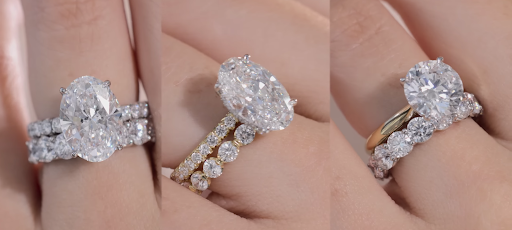

5.00ct Oval Cut Diamond French Pave Ring
When I completed crafting those three stunning sets, I couldn't contain my excitement to share them with you all.
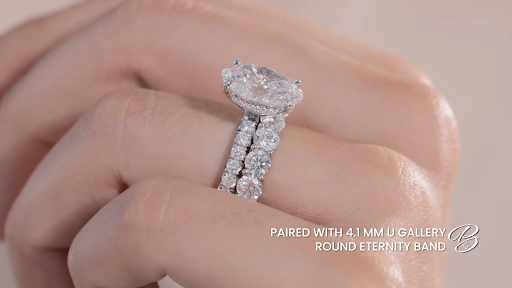

Now, let's dive into the first set, which belongs to an engaged couple on the hunt for the perfect engagement ring. When they initially reached out to me, their request was crystal clear: they had a substantial budget and were adamant about having natural diamonds. However, like many, they had questions about the difference between natural and lab-grown diamonds.
I explained that with their budget, they could certainly go the natural route and showed them what they could get. They were intrigued but also very specific about size and color. After much research and deliberation, they reached a pivotal moment in their decision-making process. They had watched my Lab Grown versus Natural Part one and Part two videos (make sure to check those out for more insight), and they asked me a crucial question: "Bonnie, what would you do?"
I emphasized that the choice ultimately depended on their preferences. Did they want to go bigger, or was the upgrade less of a priority?
Their response? They were content with not going beyond a five-carat diamond. With this in mind, I assigned them a little homework. I suggested they purchase various shapes of imitation rings from Amazon, allowing them to experiment with different styles and slowly weigh the merits of natural versus lab-grown diamonds.
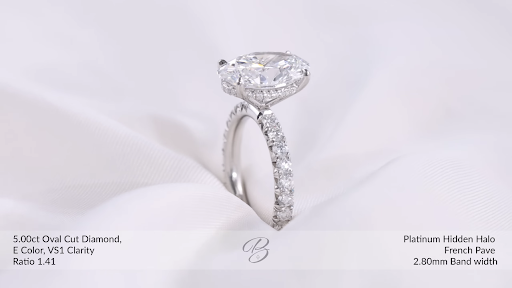

4.50ct Oval Cut Diamond Two-Tone French Pave Ring
Now, let's explore the second set, which presents a fantastic opportunity to compare two-tone and platinum options for those of you who often ask about the choice between the two. Here's a hands-on demonstration of how they look.


Both sets are quite similar in size. On my left hand, I'm wearing the five-carat, 1.41 ratio EBS1 lab-grown diamond, paired with a 4.1mm four-carat eternity band. On my other hand, you'll find the two-tone version, featuring a 4.5-carat, 1.49 ratio lab-grown diamond.
For those new to the concept of ratio, it refers to the length-to-width ratio of the stone, essentially how elongated or chubby the oval shape is.


You'll notice that even though the two-tone version is slightly larger by half a carat, its shorter ratio gives it a remarkably similar appearance to the 4.5-carat with the longer ratio.
Choosing between them can come down to personal preference, hand shape, and the overall look you desire. I have a 2.4mm band here and a 2.8mm band there, and I often recommend going for a thicker band width.
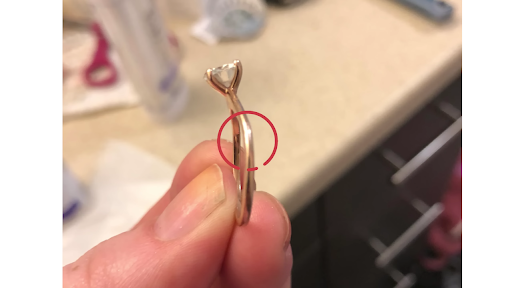

The trend of super-thin rings on Instagram may be alluring, but thicker bands offer more stability and durability.
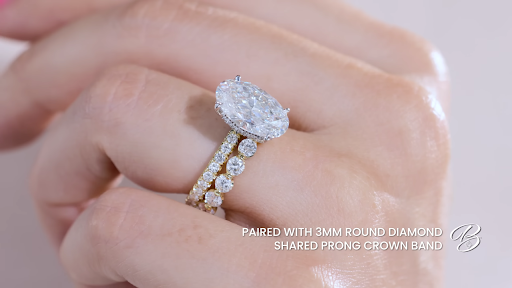

The two-tone version is complemented by a sleek band in gold, adding a warm touch, while the white gold provides a cool, icy contrast. The choice between the two can depend on your skin tone, style, and wardrobe.
Moving on to the story of another couple who sought out these rings. They had a substantial budget but preferred a smaller, natural stone. In this case, they opted for a 4.50ct lab-grown diamond, a choice that would have yielded a mere 2 to 2.50ct in the natural diamond market for the same budget.
Their decision was driven by a desire for exceptional clarity and quality without compromising on size. They made it clear that this ring was a keepsake, one they never planned to part with. And so, they embraced the lab-grown set with confidence.
4.10ct Round Brilliant Cut Diamond Solitaire Ring


So, I presented her with an option that I had also chosen for myself: the 4.10ct eight X (8X) diamond. For those unfamiliar with this term, 8X signifies an exceptional level of cut quality, surpassing the already stringent criteria for a triple excellent round diamond. I'll delve deeper into what eightex diamonds entail in a future video.
With these 8X stones, we're talking about cuts that are practically perfect, beyond perfection, the epitome of precision. The availability of this caliber of cut in lab-grown diamonds allows us to offer truly exceptional sparkle. She wanted the absolute best in sparkle, and I was more than happy to oblige.


For her, we crafted a 4.10ct engagement ring with a 4-prong setting, and you'll notice that she also opted for a thicker band at 2.8 millimeters. I know sometimes numbers can be daunting, but trust me, the visual impact is what truly matters. In this case, it provides a substantial and luxurious look.
Pairing it with an eternity band was a no-brainer. Initially, she contemplated a 4ct band, but we thought, why not go big when the center stone is such a standout? She loved the idea, and the result is simply breathtaking.
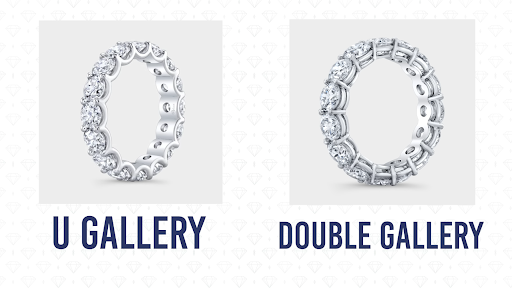

Now, let's talk about the gallery – a crucial design element. She was torn between a U-gallery and double gallery, both fantastic choices. As a busy mom, she wanted practicality alongside style, and we agreed that the double gallery was the way to go. It adds an extra touch of elegance to the set.
And there you have it, the story behind these three remarkable sets.
Considerations Before Buying Lab-Grown Diamonds
These stories shed light on why many choose lab-grown diamonds. Does this mean it's the right choice for everyone? Well, that's a personal decision that involves your budget, emotions, and how you want to respond when asked about your precious jewelry.
Owning a lab-grown diamond is a matter of personal pride and comfort, especially when friends inquire about their origin. It's a topic that still carries a hint of stigma, but the choice is yours to make. There's no definitive right or wrong answer.
I hope you found this blog insightful. Now, I'm curious: would you opt for lab-grown or natural diamonds? What factors would influence your decision? Share your thoughts with us; we'd love to know your perspective. If you are in the search of your next big diamond ring (lab-grown or not), check out my website for inspo and send me a DM if you have something in mind!








